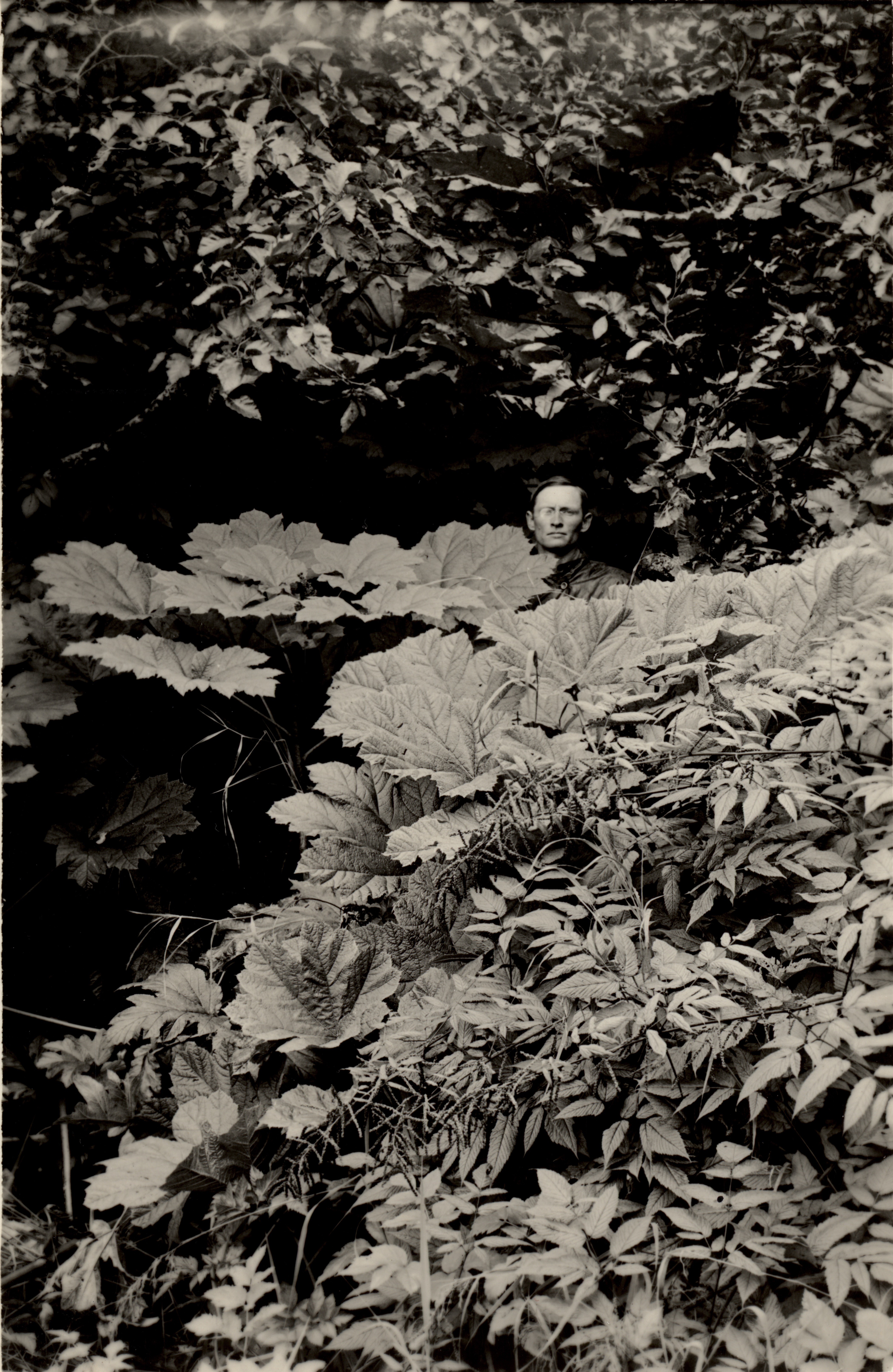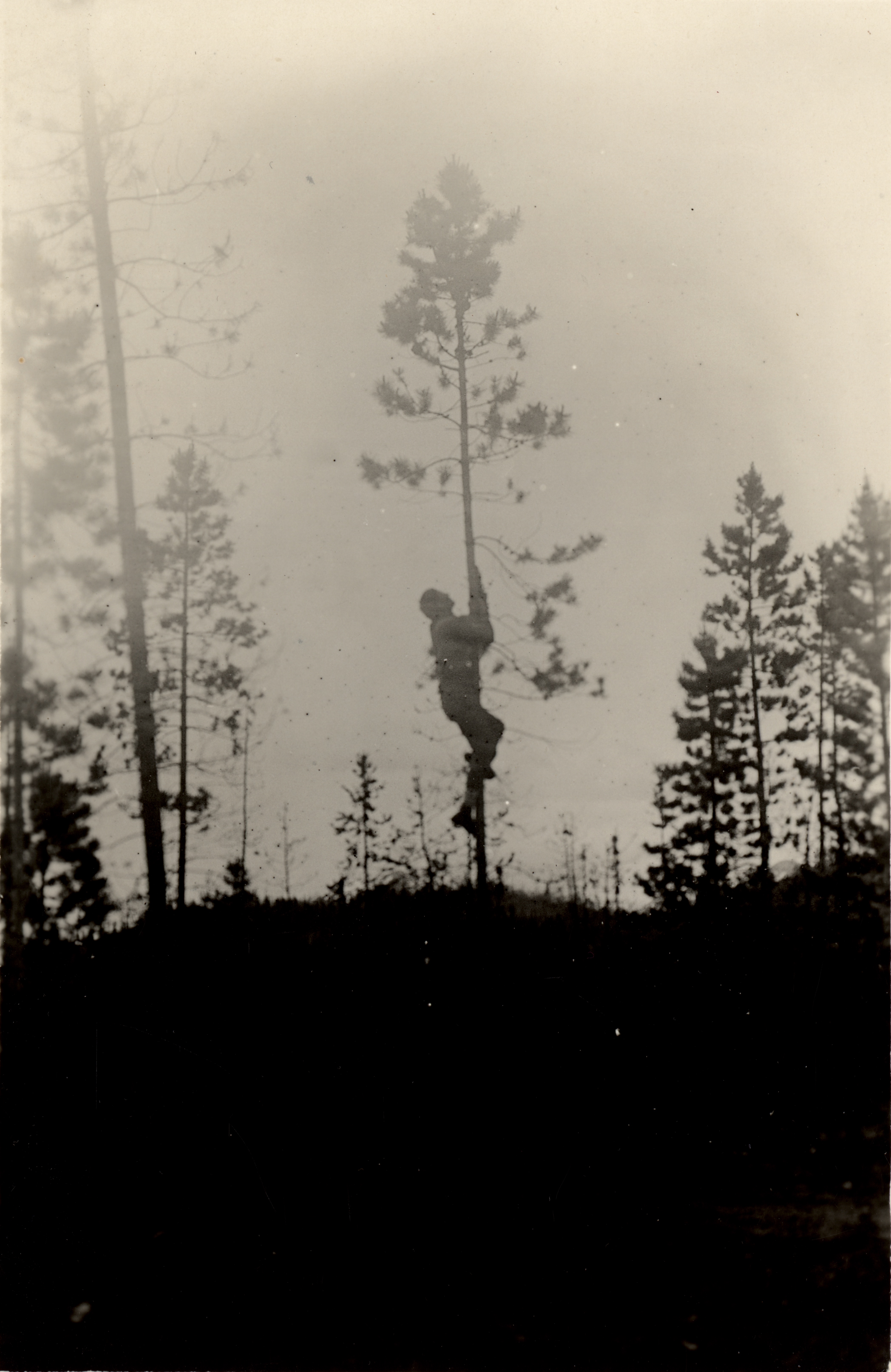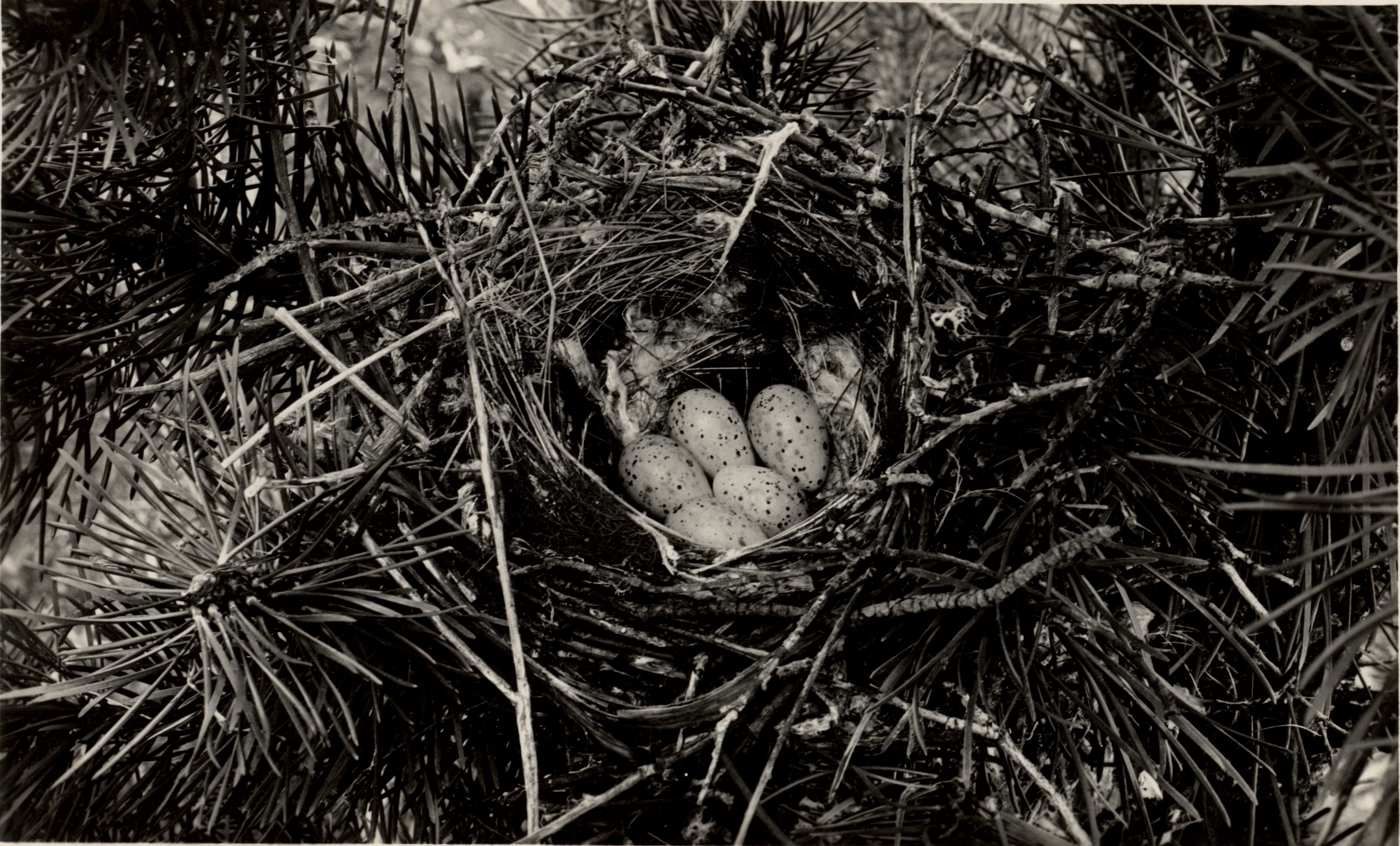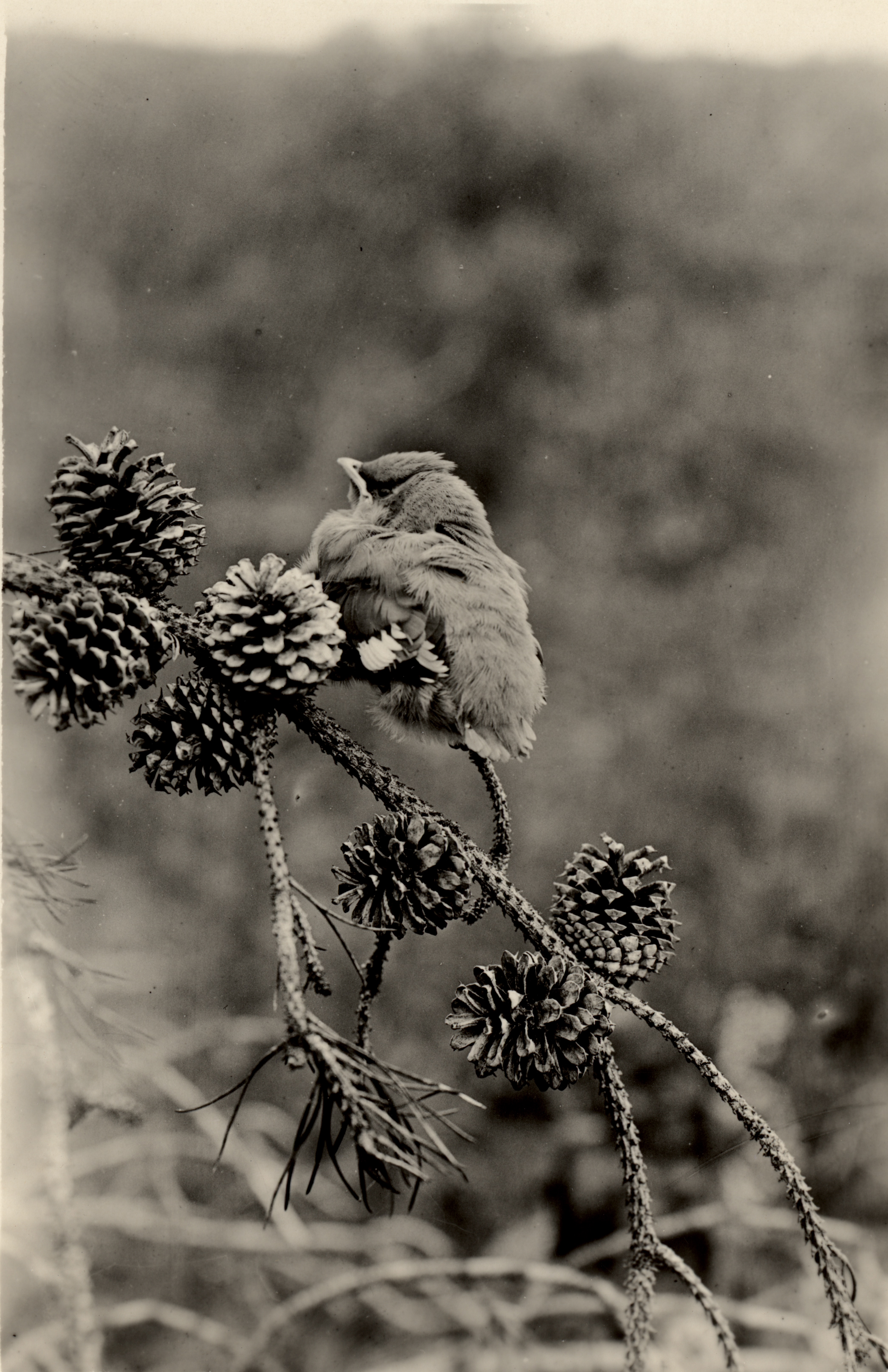Written by Masha Paramonova, a 3rd year student participating in URAP for fall 2016 and studying biology.
Often, I find myself deeply lost in the photographs I have the privilege to handle in my hours at the Museum of Vertebrate Zoology. It can be easy to focus simply on the subject matter within each photograph, of course taking some time to read its title and description. However, it’s just as easy to overlook another important piece of context when studying these photos: the photographer. In this case, a few photos from an expedition to Alaska caught my eye.

Dixon in a patch of devil club, Sergief Island, mouth of Stikine River, Alaska, August 20, 1919, by Joseph Dixon, MVZ no. 3114
Pictured is Joseph Scatterwood Dixon, a field collector for the MVZ hired by Joseph Grinnell in the early 1900s. According to the MVZ website, Dixon took roughly 3,000 photos in the MVZ archives’ collection (including all those I have included in this post). His importance, however, does not stop there. In doing some research of my own, I discovered a paper published by the National Park Service outlining not only Dixon’s collections but a biography of his life. Dixon was, first, a student of Grinnell’s at Throop Polytechnic Institute, now Caltech, which is began their connection and ultimately what resulted in their very strong working relationship. On just one expedition to Alaska, Dixon collected roughly 1,000 bird and mammal specimens, and wrote 200 pages of field notes — according to the National Park Service’s paper, when he returned he was over a year late for his own wedding. Dixon worked diligently to collect specimens, and was not only considered an expert in field survey, but also a pioneer in both wildlife research and conservation biology.

Dixon climbing to nest (#6) of Bohemian Waxwing, Telegraph Creek, British Columbia, June 24, 1919, by Joseph Dixon, MVZ no. 3140
After his breathtaking photographic work in Alaska, Dixon joined Joseph Grinnell in some formal field work in Yosemite. For a period of time, Dixon was the Assistant Curator of Mammals and Economic Mammalogist at the MVZ. Grinnell’s various expeditions and projects are more commonly known by the general public, but many other researchers along the way helped create what can now be considered the benchmark for field research. Dixon is a wonderful example of what can passionate individuals can achieve and accomplish. Not only are his photographs stunning, but they also show his dedication.

Nest and eggs of Bohemian Waxwing (set 1/5), Telegraph Creek, British Columbia, June 26, 1919, by Joseph Dixon, MVZ no. 3151

Young Bohemian Waxwing on bough in pine cones, Telegraph Creek, British Columbia, July 5, 1919, by Joseph Dixon, MVZ no. 3158
Especially now, conservation biology is an important field. The world, its creatures, landscape, and weather were vastly different a century ago compared to what we see now. Work done by those like Dixon and Grinnell provides a window, and sometimes a clear photograph, into what things were like. It is pivotal now that we do our best to maintain the beauty nature has provided us.
Additionally, if you’re interested in looking into Joseph Dixon’s works, here is the guide to his papers.
